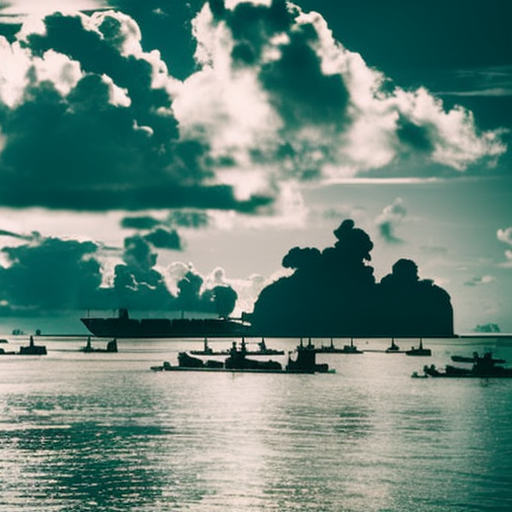Battle of Guam: The Liberation of the Pacific Island
The Battle of Guam was a significant military engagement that took place during World War II. It occurred from July 21 to August 10, 1944, on the Pacific island of Guam. The battle was fought between the United States and Japan, with the primary objective of the American forces being the recapture of Guam from Japanese control.
Background:
Guam, a strategically important island in the Pacific, had been under Japanese occupation since December 1941. The Japanese had heavily fortified the island, making it a formidable stronghold. The American forces recognized the need to retake Guam to secure their position in the Pacific and establish a base for further offensives against Japan.
Preparation:
The American forces, led by the U.S. Marine Corps, began their preparations for the assault on Guam in early 1944. Extensive intelligence gathering and reconnaissance missions were conducted to gather information about the Japanese defenses and terrain. The American troops underwent rigorous training to prepare for the challenging amphibious assault.
The Battle:
On July 21, 1944, the American forces launched their assault on Guam. The battle began with a massive naval and aerial bombardment of the Japanese positions on the island. This was followed by the landing of American troops on the beaches of Guam. The initial landing faced heavy resistance from the well-entrenched Japanese defenders.
The battle for Guam was characterized by intense fighting, as the Japanese forces fiercely defended their positions. The American troops faced numerous challenges, including difficult terrain, fortified positions, and a determined enemy. However, the superior firepower and resources of the American forces eventually turned the tide in their favor.
The battle was fought in multiple phases, with the American forces gradually pushing the Japanese defenders back. The Marines employed a combination of infantry assaults, tank attacks, and artillery barrages to dislodge the Japanese from their strongholds. The battle also saw the use of flamethrowers and grenades to clear out enemy positions.
By August 10, 1944, the American forces had successfully liberated Guam from Japanese control. The battle resulted in a decisive victory for the United States, but it came at a high cost. The American casualties numbered over 7,000, including more than 1,700 killed in action. The Japanese forces suffered heavy losses, with an estimated 18,000 soldiers killed or captured.
Significance:
The recapture of Guam was a significant milestone in the Pacific theater of World War II. It provided the United States with a vital base for further operations against Japan and served as a stepping stone towards the eventual liberation of the Philippines. The battle also demonstrated the effectiveness of amphibious assault tactics and showcased the bravery and resilience of the American forces.
The Battle of Guam remains an important event in the history of World War II, symbolizing the determination of the Allied forces to defeat the Axis powers. Today, Guam serves as a reminder of the sacrifices made by the soldiers who fought to liberate the island and secure victory in the Pacific.












